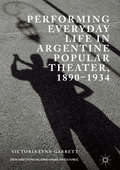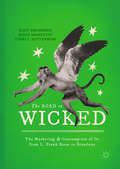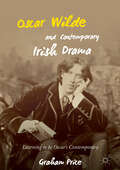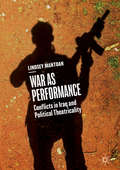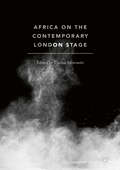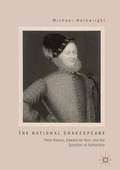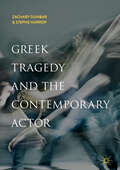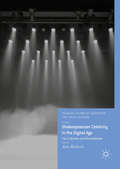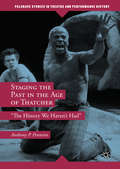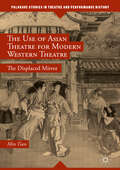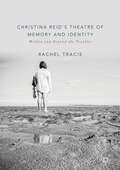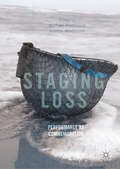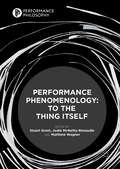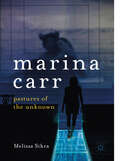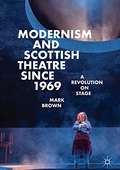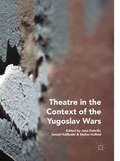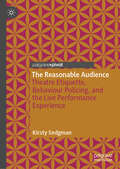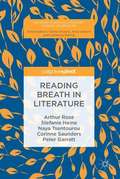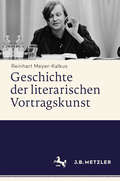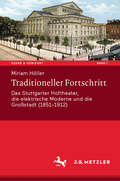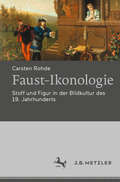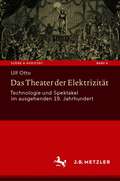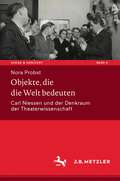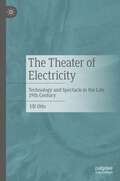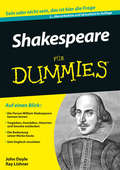- Table View
- List View
Performing Everyday Life in Argentine Popular Theater, 1890–1934 (New Directions In Latino American Cultures Ser.)
by Victoria Lynn GarrettThis book examines the prolific and widely-attended popular theater boom of the género chico criollo in the context of Argentina’s modernization. Victoria Lynn Garrett examines how selected plays mediated the impact of economic liberalism, technological changes, new competing and contradictory gender roles, intense labor union activity, and the foreign/nativist dichotomy. Popular theaters served as spaces for cultural agency by portraying conventional and innovative performances of daily life. This dramatic corpus was a critical mass cultural medium that allowed audiences to evaluate the dominant fictions of liberal modernity, to critique Argentina’s purportedly democratic culture, and to imagine alternative performances of everyday life in accordance with their realities. Through a fresh look at the relationship among politics, economics, popular culture, and performance in Argentina’s modernization period, the book uncovers largely overlooked articulations of popular-class identities and desires for greater inclusion that would drive social and political struggles to this day.
The Road to Wicked: The Marketing and Consumption of Oz from L. Frank Baum to Broadway
by Kent Drummond Susan Aronstein Terri L. RittenburgThe Road to Wicked examines the long life of the Oz myth. It is both a study in cultural sustainability— the capacity of artists, narratives, art forms, and genres to remain viable over time—and an examination of the marketing machinery and consumption patterns that make such sustainability possible. Drawing on the fields of macromarketing, consumer behavior, literary and cultural studies, and theories of adaption and remediation, the authors examine key adaptations and extensions of Baum’s 1900 novel. These include the original Oz craze, the MGM film and its television afterlife, Wicked and its extensions, and Oz the Great and Powerful—Disney’s recent (and highly lucrative) venture that builds on the considerable success of Wicked. At the end of the book, the authors offer a foundational framework for a new theory of cultural sustainability and propose a set of explanatory conditions under which any artistic experience might achieve it.
Oscar Wilde and Contemporary Irish Drama: Learning to be Oscar's Contemporary
by Graham PriceThis book is about the Wildean aesthetic in contemporary Irish drama. Through elucidating a discernible Wildean strand in the plays of Brian Friel, Tom Murphy, Thomas Kilroy, Marina Carr and Frank McGuinness, it demonstrates that Oscar Wilde's importance to Ireland's theatrical canon is equal to that of W. B. Yeats, J. M. Synge and Samuel Beckett. The study examines key areas of the Wildean aesthetic: his aestheticizing of experience via language and self-conscious performance; the notion of the dandy in Wildean texts and how such a figure is engaged with in today's dramas; and how his contribution to the concept of a ‘verbal theatre’ has influenced his dramatic successors. It is of particular pertinence to academics and postgraduate students in the fields of Irish drama and Irish literature, and for those interested in the work of Oscar Wilde, Brian Friel, Tom Murphy, Thomas Kilroy, Marina Carr and Frank McGuinness.
War as Performance: Conflicts in Iraq and Political Theatricality
by Lindsey MantoanThis book examines performance in the context of the 2003 Iraq War and subsequent conflicts with Daesh, or the so-called Islamic State. Working within a theater and performance studies lens, it analyzes adaptations of Greek tragedy, documentary theater, political performances by the Bush administration, protest performances, satiric news television programs, and post-apocalyptic narratives in popular culture. By considering performance across genre and media, War as Performance offers an interdisciplinary approach to the study of culture, warfare, and militarization, and argues that spectacular and banal aesthetics of contemporary war positions performance as a practice struggling to distance itself from appropriation by the military for violent ends. Contemporary warfare has infiltrated our narratives to such an extent that it holds performance hostage. As lines between the military and performance weaken, this book analyzes how performance responds to and potentially shapes war and conflict in the new century.
Africa on the Contemporary London Stage
by Tiziana MorosettiThis collection of essays investigates the way Africa has been portrayed on the London stage from the 1950s to the present. It focuses on whether — and, if so, to what extent — the Africa that emerges from the London scene is subject to stereotype, and/or in which ways the reception of audiences and critics have contributed to an understanding of the continent and its arts. The collection, divided into two parts, brings together well-established academics and emerging scholars, as well as playwrights, directors and performers currently active in London. With a focus on Wole Soyinka, Athol Fugard, Bola Agbaje, Biyi Bandele, and Dipo Agboluaje, amongst others, the volume examines the work of key companies such as Tiata Fahodzi and Talawa, as well as newer companies Two Gents, Iroko Theatre and Spora Stories. Interviews with Rotimi Babatunde, Ade Solanke and Dipo Agboluaje on the contemporary London scene are also included.
The Rational Shakespeare: Peter Ramus, Edward de Vere, and the Question of Authorship
by Michael WainwrightThe Rational Shakespeare: Peter Ramus, Edward de Vere, and the Question of Authorship examines William Shakespeare’s rationality from a Ramist perspective, linking that examination to the leading intellectuals of late humanism, and extending those links to the life of Edward de Vere, Seventeenth Earl of Oxford. The application to Shakespeare’s plays and sonnets of a game-theoretic hermeneutic, an interpretive approach that Ramism suggests but ultimately evades, strengthens these connections in further supporting the Oxfordian answer to the question of Shakespearean authorship.
Greek Tragedy and the Contemporary Actor
by Zachary Dunbar Stephe HarropThis book offers a provocative and groundbreaking re-appraisal of the demands of acting ancient tragedy, informed by cutting-edge scholarship in the fields of actor training, theatre history, and classical reception. Its interdisciplinary reach means that it is uniquely positioned to identify, interrogate, and de-mystify the clichés which cluster around Greek tragedy, giving acting students, teachers, and theatre-makers the chance to access a vital range of current debates, and modelling ways in which an enhanced understanding of this material can serve as the stimulus for new experiments in the studio or rehearsal room. Two theoretical chapters contend that Aristotelian readings of tragedy, especially when combined with elements of Stanislavski’s (early) actor-training practice, can actually prevent actors from interacting productively with ancient plays and practices. The four chapters which follow (Acting Sound, Acting Myth, Acting Space, and Acting Chorus) examine specific challenges in detail, combining historical summaries with a survey of key modern practitioners, and a sequence of practical exercises.
Shakespearean Celebrity in the Digital Age: Fan Cultures and Remediation (Palgrave Studies in Adaptation and Visual Culture)
by Anna BlackwellThis book offers a timely examination of the relationship between Shakespeare and contemporary digital media. By focusing upon a variety of ‘Shakespearean’ individuals, groups and communities and their ‘online’ presence, the book explores the role of popular internet culture in the ongoing adaptation of Shakespeare’s plays and his general cultural standing. The description of certain performers as ‘Shakespearean’ is a ubiquitous but often throwaway assessment. However, a study of ‘Shakespearean’ actors within a broader cultural context reveals much, not only about the mutable face of British culture (popular and ‘highbrow’) but also about national identity and commerce. These performers share an online space with the other major focus of the book: the fans and digital content creators whose engagement with the Shakespearean marks them out as more than just audiences and consumers; they become producers and critics. Ultimately, Digital Shakespeareans moves beyond the theatrical history focus of related works to consider the role of digital culture and technology in shaping Shakespeare’s contemporary adaptive legacy and the means by which we engage with it.
Staging the Past in the Age of Thatcher: The History We Haven't Had (Palgrave Studies In Theatre And Performance History Ser.)
by Anthony P. PenninoThis book investigates how the British theatrical community offered an alternative and oppositional historical narrative to the heritage culture promulgated by the Thatcher and Major Governments in the 1980s and early 1990s. It details the challenges the theatre faced, especially reductions in government funding, and examines seminal playwrights of the period – including but not limited to Caryl Churchill, Howard Brenton, Sarah Daniels, David Edgar, and Brian Friel – who dramatized a more inclusive vision of history that gave voice to traditionally marginalized communities. It employs James Baldwin’s concept of witnessing as the means by which history could be deployed to articulate an alternative and emergent political narrative: “the history we haven’t had”. This book will appeal to students and scholars of theatre and cultural studies as well as theatre practitioners and enthusiasts.
The Use of Asian Theatre for Modern Western Theatre: The Displaced Mirror (Palgrave Studies in Theatre and Performance History)
by Min TianThis book is a historical study of the use of Asian theatre for modern Western theatre as practiced by its founding fathers, including Aurélien Lugné-Poe, Adolphe Appia, Gordon Craig, W. B. Yeats, Jacques Copeau, Charles Dullin, Antonin Artaud, V. E. Meyerhold, Sergei Eisenstein, and Bertolt Brecht. It investigates the theories and practices of these leading figures in their transnational and cross-cultural relationship with Asian theatrical traditions and their interpretations and appropriations of the Asian traditions in their reactional struggles against the dominance of commercialism and naturalism. From the historical and aesthetic perspectives of traditional Asian theatres, it approaches this intercultural phenomenon as a (Euro)centred process of displacement of the aesthetically and culturally differentiated Asian theatrical traditions and of their historical differences and identities. Looking into the displaced and distorted mirror of Asian theatre, the founding fathers of modern Western theatre saw, in their imagination of the 'ghostly' Other, nothing but a (self-)reflection or, more precisely, a (self-)projection and emplacement, of their competing ideas and theories preconceived for the construction, and the future development, of modern Western theatre.
Christina Reid's Theatre of Memory and Identity: Within and Beyond the Troubles
by Rachel TracieThis book is a study of the plays, performances and writings of Christina Reid. It explores Reid’s work through her own words, both in interviews and writings; through theoretical engagements in other disciplines, such as psychology and geography; and through responses to her plays in production. It is a compilation of sorts, gathering together interviews, critical material, unpublished works and theatrical reviews to reflect the breadth and depth of Reid’s contribution to the theatrical culture of Northern Ireland, during the Troubles and beyond.
Staging Loss: Performance as Commemoration
by Michael Pinchbeck Andrew WestersideThis book locates and critically theorises an emerging field of twenty-first century theatre practice concerned, either thematically, methodologically, or formally, with acts of commemoration and the commemorative. With notions of memorial, celebration, temporality and remembrance at its heart, and as a timely topic for debate, this book asks how theatre and performance intersects with commemorative acts or rituals in contemporary theatre and performance practice. It considers the (re)performance of history, commemoration as a form of, or performance of, ritual, performance as memorial, performance as eulogy and eulogy as performance. It asks where personal acts of remembrance merge with public or political acts of remembrance, where the boundary between the commemorative and the performative might lie, and how it might be blurred, broken or questioned. It explores how we might remake the past in the present, to consider not just how performance commemorates but how commemoration performs.
Performance Phenomenology: To The Thing Itself (Performance Philosophy)
by Stuart Grant Jodie McNeilly-Renaudie Matthew WagnerThis collection of essays addresses emergent trends in the meeting of the disciplines of phenomenology and performance. It brings together major scholars in the field, dealing with phenomenological approaches to dance, theatre, performance, embodiment, audience, and everyday performance of self. It argues that despite the wide variety of philosophical, ontological, epistemological, historical and methodological differences across the field of phenomenology, certain tendencies and impulses are required for an investigation to stand as truly phenomenological. These include: description of experience; a move towards fundamental conditions or underlying essences; and an examination of taken-for-granted presuppositions. The book is aimed at scholars and practitioners of performance looking to deepen their understanding of phenomenological concepts and methods, and philosophers concerned with issues of embodiment, performativity and enaction.
Marina Carr: Pastures of the Unknown
by Melissa SihraThis book locates the theatre of Marina Carr within a female genealogy that revises the patriarchal origins of modern Irish drama. The creative vision of Lady Augusta Gregory underpins the analysis of Carr’s dramatic vision throughout the volume in order to re-situate the woman artist as central to Irish theatre. For Carr, ‘writing is more about the things you cannot understand than the things you can’, and her evocation of ‘pastures of the unknown’ forms the thematic through-line of this work. Lady Gregory’s plays offer an intuitive lineage with Carr which can be identified in their use of language, myth, landscape, women, the transformative power of storytelling and infinite energies of nature and the Otherworld. This book reconnects the severed bridge between Carr and Gregory in order to acknowledge a foundational status for all women in Irish theatre.
Modernism and Scottish Theatre since 1969: A Revolution on Stage
by Mark BrownThis book argues that Scottish theatre has, since the late 1960s, undergone an artistic renaissance, driven by European Modernist aesthetics. Combining detailed research and analysis with exclusive interviews with ten leading figures in modern Scottish drama, the book sets out the case for the last half-century as the strongest period in the history of the Scottish stage. Mark Brown traces the development of Scottish theatre’s Modernist revolution from the arrival of influential theatre director Giles Havergal at the Citizens Theatre, Glasgow in 1969 through to the advent of the National Theatre of Scotland in 2006. Finally, the book contemplates the future of Scotland’s theatrical renaissance. It is essential reading for anyone interested in contemporary theatre and/or the modern history of live drama in Scotland.
Theatre in the Context of the Yugoslav Wars
by Jana Dolečki Senad Halilbašić Stefan HulfeldThis book assembles texts by renowned academics and theatre artists who were professionally active during the wars in former Yugoslavia. It examines examples of how various forms of theatre and performance reacted to the conflicts in Serbia, Croatia, Bosnia and Herzegovina, Slovenia, and Kosovo while they were ongoing. It explores state-funded National Theatre activities between escapism and denial, the theatre aesthetics of protest and resistance, and symptomatic shifts and transformations in the production of theatre under wartime circumstances, both in theory and in practice. In addition, it looks beyond the period of conflict itself, examining the aftermath of war in contemporary theatre and performance, such as by considering Ivan Vidić’s war trauma plays, the art campaigns of the international feminist organization Women in Black, and Peter Handke’s play Voyage by Dugout. The introduction explores correlations between the contributions and initiates a reflection on the further development of the research field. Overall, the volume provides new perspectives and previously unpublished research in the fields of theory and historiography of theatre, as well as Southeast European Studies.
The Reasonable Audience: Theatre Etiquette, Behaviour Policing, And The Live Performance Experience
by Kirsty SedgmanAudiences are not what they used to be. Munching crisps or snapping selfies, chatting loudly or charging phones onstage – bad behaviour in theatre is apparently on the rise. And lately some spectators have begun to fight back…The Reasonable Audience explores the recent trend of ‘theatre etiquette’: an audience-led crusade to bring ‘manners and respect’ back to the auditorium. This comes at a time when, around the world, arts institutions are working to balance the traditional pleasures of receptive quietness with the need to foster more inclusive experiences. Through investigating the rhetorics of morality underpinning both sides of the argument, this book examines how models of 'good' and 'bad' spectatorship are constructed and legitimised. Is theatre etiquette actually snobbish? Are audiences really more selfish? Who gets to decide what counts as ‘reasonable’ within public space?Using theatre etiquette to explore wider issues of social participation, cultural exclusion, and the politics of identity, Kirsty Sedgman asks what it means to police the behaviour of others.
Reading Breath in Literature (Palgrave Studies in Literature, Science and Medicine)
by Peter Garratt Arthur Rose Stefanie Heine Naya Tsentourou Corinne SaundersThis open access book presents five different approaches to reading breath in literature, in response to texts from a range of historical, geographical and cultural environments. Breath, for all its ubiquity in literary texts, has received little attention as a transhistorical literary device. Drawing together scholars of Medieval Romance, Early Modern Drama, Fin de Siècle Aesthetics, American Poetics and the Postcolonial Novel, this book offers the first transhistorical study of breath in literature. At the same time, it shows how the study of breath in literature can contribute to recent developments in the Medical Humanities.
Geschichte der literarischen Vortragskunst
by Reinhart Meyer-KalkusLiterarische Vortragskunst entstand in Deutschland in der zweiten Hälfte des 18. Jahrhunderts als ein von Schauspiel und anderen Vortragsgattungen (Rede, Predigt, Vorlesung etc.) unterschiedenes Sprachspiel des Vorlesens, Rezitierens und Deklamierens von Gedichten, Erzählungen und Dramen. Die vorliegende Untersuchung ist die erste umfassende Geschichte dieser Vortragskunst von Klopstock bis zu Kling, ja bis zum Poetry-Slam. Sie konzentriert sich auf die verschiedenen Akteure (Autoren, professionelle Rezitatoren, Deutschlehrer, Sprecherzieher und Laien) sowie auf deren Vortragsformate und Zuhörer im Kontext der Veränderung vortragsästhetischer Normen und mediengeschichtlicher Innovationen. Mit Rückgriff auf Einsichten der Medienwissenschaft, Performance-Analyse und Stimmforschung entwickelt sie einen analytischen Ansatz, um Vortragsformate und Vortragsweisen in ihrer Historizität zu beschreiben.
Traditioneller Fortschritt: Das Stuttgarter Hoftheater, die elektrische Moderne und die Großstadt (1851-1912) (Szene & Horizont. Theaterwissenschaftliche Studien #7)
by Miriam HöllerDie Studie über das Stuttgarter Hoftheater denkt Theater und Stadt zur Zeit der Elektrifizierung um 1900 zusammen. Welchen Einfluss hatte die Theatertechnik auf die werdende Großstadt? Wie wurde umgekehrt das Theater durch die Urbanisierung und Technisierung der Stadt geprägt? Die Studie untersucht anhand historischer Quellen diese Wechselbeziehung über die Analyse neuer räumlich-materieller Vernetzungen. Außerdem analysiert sie kollektive Großstadt-Imaginationen, die zwischen 1902 und 1912 bei der Planung eines Theaterneubaus in Stuttgart aufkamen und die insbesondere über die Architektur und Technik des Theaters verhandelt wurden. Zentral war dabei eine Aushandlung im Spannungsfeld von Tradition und Moderne. So zeigt die Studie, dass auch ein Hoftheater fern der Metropolen als Ort der Moderne erfahren werden konnte, und leistet somit am Schnittpunkt von Theater-, Technik-, Stadt- und Kulturgeschichte einen Beitrag zur Erforschung der Vielfalt des deutschen Theaters um 1900.
Faust-Ikonologie: Stoff und Figur in der Bildkultur des 19. Jahrhunderts
by Carsten RohdeDie Geschichte des Faust-Stoffes seit Goethe ist lange Zeit vor allem unter ideologischen Gesichtspunkten gedeutet worden. Die vorliegende Studie untersucht erstmals tiefergehend die populärkulturellen Resonanzen von Faust in der sich formierenden Medienmoderne des 19. Jahrhunderts. Die ‚Explosion der Bilder‘ sorgt dafür, dass Stoff und Figur in einer nie dagewesenen Vielfalt und Breite als visuelles Phänomen in Erscheinung treten. Faust wird zu einer populären Projektions- und Identifikationsfigur, die mit ganz unterschiedlichen Formen, Funktionen und Kontexten in Verbindung steht. Ihre Omnipräsenz in der Bildkultur des Jahrhunderts ist sowohl Spiegel als auch Katalysator dieser Entwicklungen.
Das Theater der Elektrizität: Technologie und Spektakel im ausgehenden 19. Jahrhundert (Szene & Horizont. Theaterwissenschaftliche Studien #6)
by Ulf OttoDas Theater der Moderne gründet sich auf ästhetische Energien. Seit den 1880er Jahren aber sind es elektrische Energien, aus fossilen Brennstoffen in Kraftwerken erzeugt, die im Theater zu zirkulieren beginnen. Installiert wird eine mysteriöse Entität, die noch als Lebenskraft gehandelt wird und schon für Fortschritt durch Technik steht. Mit der Elektrifizierung des Theaters wird Elektroindustrie respektabel und Bühnenkunst modernistisch. Entsorgt werden die Kulissen, die im Scheinwerferlicht nur noch verstaubt erscheinen, und aus der Bildermaschine wird Raumkunst. Doch wichtiger sind die institutionellen Transformationen, die sich in bislang unbeachteten Koalitionen, Kontinuitäten und Konkurrenzen von technischen und ästhetischen Dingen abspielen. Ingenieurswissen, Kontrolltechniken und Versorgungssysteme ändern, wie Theater und Gesellschaft verschaltet sind. Der Interaktionsraum (zwischen-)menschlicher Leiblichkeit des 20. Jahrhunderts entpuppt sich als eine technische Konstellation.
Objekte, die die Welt bedeuten: Carl Niessen und der Denkraum der Theaterwissenschaft (Szene & Horizont. Theaterwissenschaftliche Studien #4)
by Nora ProbstDas Buch widmet sich in wissenschaftsgeschichtlicher Perspektive den Anfängen der Theaterwissenschaft in Köln. Es untersucht die Wissenschaftspraktiken des Kölner Institutsgründers Carl Niessen (1890–1969), der das Fach als Forscher, Dozent, Sammler und Kurator über einen Zeitraum von rund 40 Jahren geprägt hat. Besonderes Augenmerk legt diese erste wissenschaftsgeschichtliche Monografie über Niessen auf dessen erweitertes Theaterverständnis, das den Bogen von rituellen Handlungen und cultural performances bis hin zu den Phänomenen des europäischen Gegenwartstheaters spannte. – Ausgangspunkt der Studie ist das Gebäude des im Zweiten Weltkrieg zerstörten Theatermuseums am Salierring in Köln. Durch das virtuelle Abschreiten der Museumsräume werden die durch Niessen initiierten Praktiken der frühen Theaterforschung und -lehre kartografiert und vor dem Hintergrund der Fachentwicklung analysiert.
The Theater of Electricity: Technology and Spectacle in the Late 19th Century
by Ulf OttoSince the 1880s, electrical energies started circulating in European theaters, generated from fossil fuels in urban power plants. A mysterious force, which was still traded as romantic life force by some and for others had already come to stand in for progress, entered performance venues. Engineering knowledge, control techniques and supply chains changed fundamentally how theater was made and thought of. The mechanical image machine from Renaissance and Baroque times was transformed into a thermodynamic engine. Modern theater turned out to be electrified theater. – Retracing what happened backstage before the Avantgarde took to the front stage, this book proposes to write the genealogy of theaters modernity as a cultural history of theater technology.
Shakespeare für Dummies (Für Dummies)
by John Doyle Ray LischnerEntdecken Sie die Geheimnisse von Romeo, Hamlet, Macbeth & Co. Dachten Sie bisher immer, dass Shakespeare eine Nummer zu groß für Sie ist? Oder gehören Sie zu denjenigen, die dank der zahlreichen Verfilmungen seiner Werke gerne mehr über ihn erfahren möchten? Oder möchten Sie einmal einen Blick in die englischen Originale werfen? Dann sollten Sie sich dieses Buch nicht entgehen lassen. Fernab von trockenen Schulvorträgen und schlechten Aufführungen entführen Sie John Doyle und Ray Lischner in die spannende Welt von Shakespeare. Sie führen Sie an seine wichtigsten Werke heran: die Tragödien, Komödien, Historien und Sonette. Außerdem erfahren Sie alles über sein Leben und sein außergewöhnliches Englisch.
